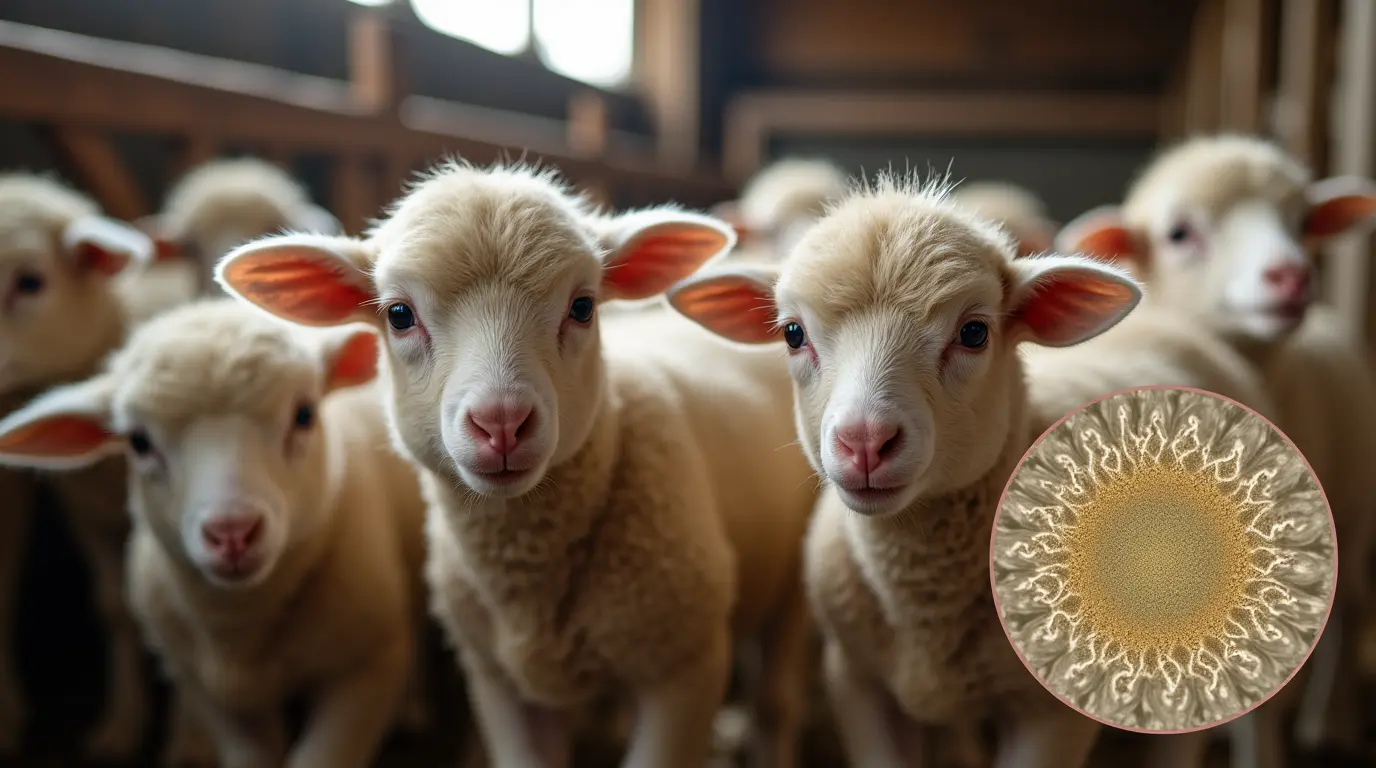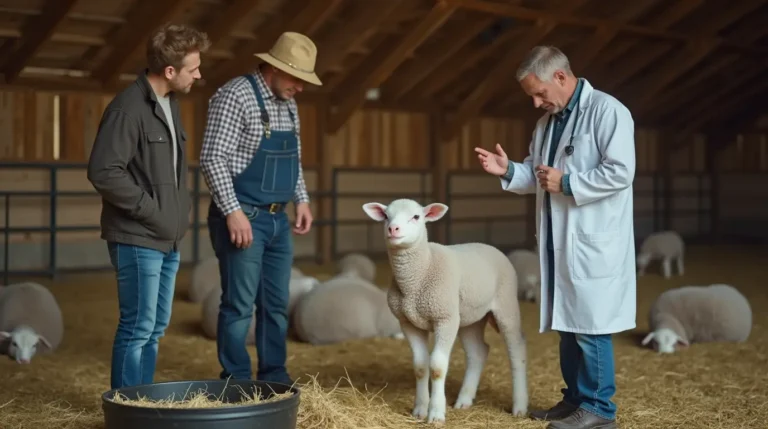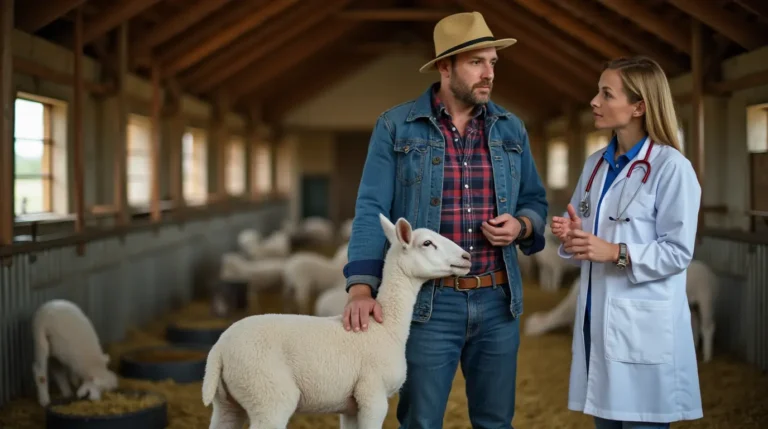Protect your lamb flock from deadly ammonia poisoning in lambs . Learn the top 5 causes, prevention strategies, and critical signs to safeguard your livestock’s health.

Table of Contents
Lamb farming is a delicate balance of care, nutrition, and environmental management. Among the most insidious threats to young lambs is ammonia poisoning—a silent danger that can devastate an entire flock. Ammonia poisoning in lambs is not just a theoretical risk but a real-world challenge that demands immediate attention and proactive prevention.
This comprehensive guide will walk you through the intricate landscape of ammonia poisoning, unveiling its five most common causes and providing practical, actionable strategies to protect your most vulnerable livestock. Whether you’re a seasoned shepherd or a new lamb raiser, understanding these critical insights could mean the difference between a thriving flock and a devastating loss.
Understanding Ammonia Poisoning in Lambs: The Basics
What is Ammonia Poisoning?
Ammonia poisoning occurs when lambs are exposed to high concentrations of ammonia gas, typically generated from accumulated animal waste, moisture, and poor ventilation. This toxic gas can cause severe respiratory distress, compromising the lamb’s delicate respiratory system and potentially leading to long-term health complications or fatal outcomes.
The 5 Common Causes of Ammonia Poisoning in Lambs
1. Poor Ventilation in Livestock Housing
Key Indicators:
- Stagnant air
- High humidity levels
- Enclosed spaces with minimal air circulation
Prevention Strategies:
- Install adequate ventilation systems
- Use adjustable side curtains in barns
- Implement mechanical ventilation fans
- Ensure proper spacing between animals
2. Inadequate Waste Management
Risk Factors:
- Infrequent cleaning of livestock areas
- Wet, soiled bedding
- Improper manure storage and disposal
Comprehensive Management Approach:
- Develop a rigorous cleaning schedule
- Use absorbent bedding materials
- Implement daily spot-cleaning protocols
- Create dedicated waste management zones
3. Overcrowding and Density Issues
Overcrowding Consequences:
- Increased waste concentration
- Reduced air quality
- Higher moisture levels
- Accelerated ammonia production
Density Management Techniques:
- Calculate optimal stocking densities
- Provide minimum recommended space per lamb
- Create multiple smaller housing units
- Rotate grazing and resting areas
4. Improper Nutrition and Metabolic Factors
Nutritional Influences on Ammonia Production:
- High-protein diets
- Imbalanced feed composition
- Inefficient protein metabolism
Nutritional Optimization Strategies:
- Consult with veterinary nutritionists
- Balance protein-to-energy ratios
- Use precision feeding techniques
- Monitor individual lamb metabolic health
5. Moisture and Humidity Control Challenges
Moisture-Related Ammonia Risks:
- Wet flooring
- Poor drainage systems
- High environmental humidity
Moisture Management Solutions:
- Install proper drainage infrastructure
- Use elevated and sloped flooring
- Implement moisture-absorbing bedding
- Monitor humidity levels consistently
Detecting Early Signs of Ammonia Poisoning
Respiratory Symptoms
- Labored breathing
- Increased respiratory rate
- Nasal discharge
- Persistent coughing
Behavioral Indicators
- Reduced feed intake
- Lethargy
- Weakness
- Decreased growth rates
Diagnostic and Treatment Approaches
Professional Assessment
- Veterinary respiratory examinations
- Air quality testing
- Blood gas analysis
- Lung function assessments
Treatment Protocols
- Immediate environmental intervention
- Supplemental oxygen therapy
- Anti-inflammatory medications
- Comprehensive supportive care
Recommended Products on Amazon
- Digital Hygrometer Thermometer
- Livestock Ventilation Fan
- Professional Ammonia Gas Detector
- High-Absorption Animal Bedding
Frequently Asked Questions (FAQ)
Q1: How quickly can ammonia poisoning affect lambs? Ammonia can cause respiratory damage within hours of continuous exposure, making rapid intervention crucial.
Q2: What ammonia concentration is dangerous for lambs? Concentrations above 25 parts per million (ppm) can cause significant health risks.
Q3: Can ammonia poisoning be completely prevented? While 100% prevention is challenging, implementing comprehensive management strategies significantly reduces risks.
Q4: How often should livestock housing be cleaned? Recommended daily spot-cleaning with thorough deep cleaning every 1-2 weeks.
Q5: Are some lamb breeds more susceptible to ammonia poisoning? Young lambs and breeds with respiratory sensitivities are generally more vulnerable.
Call to Action
Protecting your lamb flock from ammonia poisoning requires continuous learning and proactive management. Share your experiences, challenges, and success stories in the comments below. By collaborating and sharing knowledge, we can create healthier, more resilient livestock environments.
Conclusion
Ammonia poisoning in lambs is a complex challenge that demands comprehensive, multifaceted strategies. By understanding its causes, implementing rigorous prevention techniques, and maintaining vigilant monitoring, farmers can significantly mitigate risks and promote optimal lamb health.
Knowledge, consistent management, and a commitment to continuous improvement are your most powerful tools in safeguarding your valuable livestock.
Take Action Now: Download Our Free Lamb Health Management Checklist!





